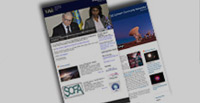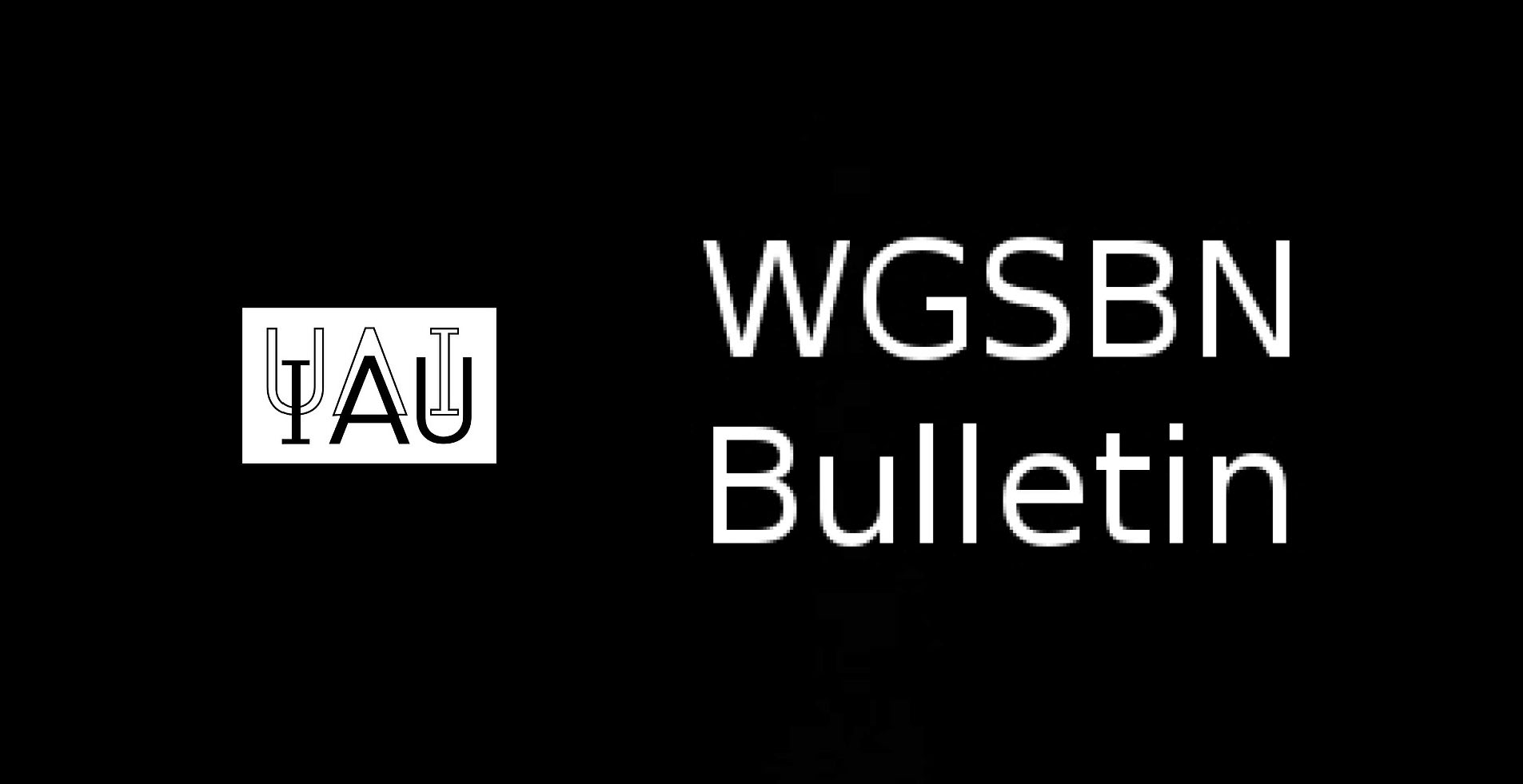- News
- Science
- Scientific Bodies
- Divisions
- Commissions
- Commission A1 Structure
- Commission A2 Structure
- Commission A3 Structure
- Commission A4 Structure
- Commission B1 Structure
- Commission B2 Structure
- Commission B3 Structure
- Commission B4 Structure
- Commission B5 Structure
- Commission B6 Structure
- Commission B7 Structure
- Commission C1 Structure
- Commission C2 Structure
- Commission C3 Structure
- Commission C4 Structure
- Commission C5 Structure
- Commission D1 Structure
- Commission E1 Structure
- Commission E2 Structure
- Commission E3 Structure
- Commission E4 Structure
- Commission F1 Structure
- Commission F2 Structure
- Commission F3 Structure
- Commission F4 Structure
- Commission G1 Structure
- Commission G2 Structure
- Commission G3 Structure
- Commission G4 Structure
- Commission G5 Structure
- Commission H1 Structure
- Commission H2 Structure
- Commission H3 Structure
- Commission H4 Structure
- Commission J1 Structure
- Commission J2 Structure
- Commission J3 Structure
- Commission X1 Structure
- Commission X2 Structure
- Past Commission Organising Committees
- Working Groups
- Centres
- Scientific Meetings
- Rules & Guidelines
- General Assemblies
- Meeting Proposals
- Future IAU Meetings
- General Assemblies
- EC Meetings
- Officers' Meetings
- Regional Meetings
- Symposia
- Focus Meetings
- Institutional Meetings
- IAU Offices Meetings
- IAU-Sponsored Meetings
- Letters of Intent submitted for 2024
- Letters of Intent submitted for 2023
- Letters of Intent submitted for 2022
- Letters of Intent submitted for 2021
- Letters of Intent submitted for 2020
- Past IAU Meetings
- Templates
- Other Meetings
- Grants & Prizes
- Scientific Bodies
- Publications
- IAU Publications
- IAU Strategic Plan
- Symposia
- WGSBN Bulletins
- Regional Meetings
- Information Bulletins/Catalyst
- E-Newsletters
- Focus Meetings
- Transactions A
- Transactions B
- Related Publications
- GA Newspapers
- CAPjournal
- IAU Books
- Brochures
- IAU Offices
- WG Reports
- Commission Reports
- Division Reports
- Past IAU Publications
- Rules, Guidelines and Instructions for Proceedings
- Publishers
- IAU Publications
- Administration
- About the IAU
- Statutes & Rules
- IAU Policies
- IAU Executive Bodies
- IAU Secretariat
- Resolutions
- Members Administration
- Administrative Dates & Deadlines
- International Organisations Relations
- Donate to the IAU
- Training in Astronomy
- Astronomy for Education
- Astronomy for Development
- Astronomy for the Public
- Office for Astronomy Outreach
- FAQ
- Themes
- Satellite Constellations
- Astronomy in Everyday Life
- How to Report a Discovery
- Careers in Astronomy
- Defining our Place in the Cosmos
- The Constellations
- Light Pollution
- Measuring the Universe
- Near Earth Objects
- How to Participate in Astronomy Research
- Naming of Astronomical Objects
- Naming of Exoplanets
- Buying Star Names
- Naming Stars
- Pluto and the Solar System
- IAU Member Statistics
- Our Moon: the Moon
- Meteors & Meteorites: The IAU Definitions of Meteor Terms
- UNESCO-IAU Portal to the Heritage of Astronomy
- Social Media
- Past Events
- Call for Online Resources
- Astronomy@Home Awards
- Contact

Thomas Arvid Clark
United States
1939-2021
Obituary:
OBITUARY #1:
It is my sad duty to inform you that Dr. Tom Clark passed away on Tuesday,
September 28 at the age of 82. The VLBI world has lost one of its pioneers.
Tom received a Ph.D. in astro-geophysics from the University of Colorado
in Boulder. His dissertation involved building a very large 10 MHz Radio Tele-
scope on a mesa north of Boulder. After spending two years as Werner von
Braun's Solar Physicist at NASA Marshall Space Flight Center in Alabama, he
moved to NASA Goddard Space Flight Center in 1968. In 1969, he also joined
the University of Maryland Physics & Astronomy faculty.
His various talents and connections were instrumental in establishing the
Goddard VLBI Group. He was the long-term principal investigator for the VLBI
activities at NASA GSFC and directed the program for over 30 years until his
retirement in 2001. In 2005, he became the first non-Russian scientist to be
awarded the Gold Medal of the Institute of Applied Astronomy of the Russian
Academy of Sciences for his lifetime contributions to the development of VLBI.
Tom was an avid amateur radio (ham radio) hobbyist. He was also very fond of
photography, traveling, and his supercharged Mini Cooper. Please join me in
sharing our condolences with Tom's family, friends, and colleagues.
With sadness,
Dirk Behrend
IVS Coordinating Center
================================================================================
OBITUARY #2:
Contributed by David B. Shaffer, with assistance from Brian E. Corey, Alan E. E. Rogers, and Nancy R. (Vandenberg) Rowland
Tom Clark was born in Durango, Colorado on August 23, 1939 and grew up in southern Colorado. He passed away on September 28, 2021, in Columbia, Maryland two weeks after suffering a stroke and brief hospitalization.
Tom was an early practitioner of VLBI and a pioneer in its application to Geodesy and Astrometry. A founding member of the NASA Crustal Dynamics Project (CDP), he developed and lead the geodetic VLBI group at NASA Goddard Space Flight Center (GSFC) over the course of some 30 years until he retired in 2001 as a NASA Senior Scientist.
At a young age, Tom became interested in science and technology, and became an amateur radio operator in 1952 (a field in which he also became quite prominent, as noted briefly below). Tom received his B.S. in Engineering Physics (1961), and first ventured into radio astronomy as a grad student, at the University of Colorado (Boulder), where he built a large 10 MHz telescope on a mesa north of Boulder for his thesis project in AstroGeophysics (1967).
After UC, from 1966 to 1968, he served as Chief of the Astronomy Branch at NASA Marshall Space Flight Center and as Project Scientist on the Spacelab Coronagraph. In 1968, Tom moved to NASA GSFC where he resumed research in low-frequency radio astronomy and worked on two VLF satellites, Radio Astronomy Explorers (RAE) 38 and 49. At about the same time, he became interested in the relatively-new field of Very Long Baseline Interferometry (VLBI) as well as the recently-discovered pulsars (then best studied at low frequencies), and also at about the same time, he joined the faculty of the University of Maryland, as an adjoint professor in astronomy.
Early on at U. Md, Tom had his students doing low-frequency (74 - 196 MHz) VLBI of pulsars, using some antennas for the first, and even only, time for VLBI: the NRAO 91m, a 45m at Sugar Grove, W. Va., and Arecibo. Following Tom's first year teaching radio astronomy to graduate students at U. Md., one of us (NRV) started work for him as a summer student at Goddard. She assisted with scheduling and observing for the low-frequency experiments and eventually became the first of his many Ph.D. students, all of whom contributed in various ways to the initial stages of the development of the VLBI technique.
Recognizing the capabilities available at/through NASA (hydrogen masers being developed by Harry Peters, a number of antennas used for spacecraft tracking, fast computers (needed early on for VLBI data processing)), and the availability of U. Md. Grad students, Tom successfully pitched a VLBI program to GSFC managers, emphasizing the possibilities for astrometry and geodesy. One of us (DBS) first met Tom in 1969 when he took a number of Mk I VLBI data tapes from NRAO-CalTech experiments to GSFC for processing.
Tom and Bill Erickson (U. Md.) joined forces with like-minded scientists at MIT and Haystack and a host of graduate students and post-docs to form the East Coast VLBI group. This group used the original Mk I VLBI system (based on computer 7- and 9-track tape drives) and their bandwidth synthesis technique, along with a very accurate correlator phase model, to make a series of increasingly more precise geodetic measurements through the 1970s of the relative positions of several antennas in the U.S. and one in Sweden. The group also made the first VLBI measurements of general relativity (source position deflection by the Sun) by measuring the relative positions of 3C273 and 3C279 as the latter slid behind the sun every October, over the course of several "Octoberfest" observing sessions - culminating, perhaps, in "Octoberfest 1972" during which some 10,000+ tapes were recorded!
To improve geodetic and astrometric precision (as well as to allow measurements of the structure of compact radio sources other than the dozen or so strongest), it became obvious to VLBI practitioners that higher data rate recording was needed. In the 1970s, Tom was instrumental in getting the resources from NASA for the development of the Mk III VLBI system, tailored particularly for geodetic VLBI: high data rates and bandwidth synthesis for precise delay measurements (but, recording on pesky, heavy, error-prone 28-track tapes) as well as careful calibration of the observing equipment, and precise geodetic models for correlation and subsequent analysis.
From 1979 to 1992, Tom was the technical and inspirational leader of the NASA Crustal Dynamics Project (CDP), which organized and largely funded a growing series of international geodetic VLBI observations at radio telescopes equipped with Mk III systems and, later, VLBA systems. These observations led to the first robust, contemporary detection of continental drift/plate tectonics (as opposed to its being inferred from the geological record). They also included multi-year campaigns such as the Great Alaska and Pacific Experiment (GAPE), which used fixed and mobile telescopes in California, Alaska, Japan, Hawaii, and the Marshall Islands to pin down the tectonic plate motions around the Pacific "Ring of Fire."
An important astronomical outgrowth of the CDP was the establishment of the International Celestial Reference Frame, initially largely based on an augmented source list used for geodetic observations.
Tom was a very practical engineer and scientist with a great knowledge of radio techniques gained through his "hands-on" experience with amateur radio. Tom was the key person in understanding the entire geodetic VLBI system and was lead author in the publication of "Precision Geodesy Using the Mark-III Very-Long-Baseline Interferometer System," Clark, et al. (1985), IEEE Transactions on Geoscience and Remote Sensing, GE-23, 438-449.
Not only did the Mk III system enable great leaps forward in geodetic VLBI, but perhaps more importantly for the VLBI technique, its successful implementation also provided the basis for the development of the next generation of wide-bandwidth backends and recorders used in the US VLBI Array (VLBA).
As the Mk III evolved, still under the influence of Tom/NASA support, it became the Mk IV and Mk V systems, as every-day computer hard drives replaced the cantankerous tape drives. These systems are now in use worldwide, for routine reliable VLBI observations of all types (geodesy, astrometry, and radio source structure and evolution), perhaps the ultimate tribute to Tom's forward thinking from the 1970s.
Tom's long-time interest in technology and time transfer led him to develop the first commercially available, low-cost, GPS-steered clock: the so-called Totally Accurate Clock, or TAC (which, not coincidentally, are also Tom's initials). Hundreds of these clocks or their successors have been employed at VLBI telescopes and other locations around the world to provide essential time-keeping services.
Even in retirement, Tom's enthusiasm for developing new technology and applying it to VLBI led to his deep involvement in the early stages of designing and testing hardware for the VLBI Global Observing System (VGOS) of wide-bandwidth frontends and fast-slewing antennas, which today are replacing the previous generation of geodetic systems to which Tom contributed so much.
In 2005, Tom became the first non-Russian scientist to be awarded the Gold Medal of the Institute of Applied Astronomy (IAA) of the Russian Academy of Sciences for his lifetime contributions to the development of VLBI. Many of the details of Tom's life and career noted herein, as well as much more on Tom's life and the history of (geodetic) VLBI, came from a presentation he gave on February 10, 2005 at the IAA when he was awarded the gold medal.
Tom was named a Fellow of the American Geophysical Union (1991) and the International Association of Geodesy (1999).
He was also very fond of photography, traveling, and various high-performance cars, including a supercharged Mini Cooper and a Porsche Cayman which he affectionately called Ol' Yallar II.
Upon his passing, the NASA Space Geodesy website noted "Those of us who worked with Tom during the Crustal Dynamics period remember him as a brilliant mind, a very interesting and sometimes caustic character, but someone who was kind, supportive, and very helpful to those of us around him. We will miss him." As will we all.
No biography of Tom would be complete without some mention of his pioneering work in amateur ("Ham") and digital radio. His accomplishments there are legendary, and he left a lasting imprint on the worlds of amateur radio satellites and digital techniques.
When talking publicly, Tom would frequently remind the audience that the word "amateur" in amateur radio should not be a disparaging word, because the Wright Brothers innovated as amateur aircraft builders, just like radio amateurs have innovated radio and satellite technology for the betterment of society.
Much of the following material comes from various amateur radio web sites.
Tom (first amateur radio call sign WN0IUF in 1952 and final call K3IO) was involved with the amateur radio satellite corporation (AMSAT) for more than 48 years, serving as an instrumentation designer, chief technologist, director, President, and President Emeritus. He was instrumental in the early construction and launch of small satellites. Clark was one of the architects of the Microsat, a set of 4 cube microsatellites first launched in 1990, which paved the way for the CubeSat revolution. To honor Clark, AMSAT rebranded its 2021 annual gathering as "The 2021 AMSAT Dr. Tom Clark, K3IO, Memorial Space Symposium and Annual General Meeting."
Tom co-led the startup of human spaceflight amateur radio initiatives and helped develop systems on the Shuttle and ISS that actively engage students and the ham radio community to this day.
He was one of only 50 initial inductees into the CQ Magazine Amateur Radio Hall of Fame, along with such engineering luminaries and inventors as Marconi, Morse, Tesla, Bardeen, and Shockley. In 2016, the American Radio Relay League (ARRL, the association of amateur radio operators in the US) bestowed on Clark its President's Award, to recognize his 60 years of advancing amateur radio technology. On that occasion, Bob McGwier (N4HY and one of Tom's principal technical collaborators) said, "There would be no AMSAT to inspire all of this work without Tom Clark. Tom...saved the organization and inspired all of us to look to the future and aim for the stars."
Tom was a founding member of Tucson Amateur Packet Radio (TAPR), and was a cofounder of the TAPR/AMSAT DSP (digital signal processing) Project, which led to now-ubiquitous software-defined radios. In concert with McGwier, Clark developed the first amateur DSP hardware, including a number of modems. He developed the uplink receivers and the spacecraft LAN architecture used on many amateur radio satellites (the Microsats/Oscars 16, 17, 18, 19, 26, 27, and 31).
Upon Tom"s death, McGwier noted "His longtime technical achievements, mentoring to others, and technical leadership will be missed by his many peers and friends the world over."
Search individual members

















